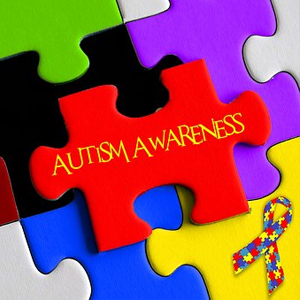Resolution of Chronic Seizures in an Infant
The Journal of Pediatric, Maternal & Family Health published a case study on December 27, 2018, documenting chiropractic bringing about the resolution of chronic seizures in an infant. A seizure is a sudden surge of electrical activity in the brain.
 The
study begins by explaining that seizures or epilepsy can
occur from an interference with the mechanism creating an
over excitement of brain firings, or from an inhibition of
the mechanisms that control brain firing. The study reports
that epilepsy occurs in between 41 and 187 individuals per
100,000 children.
The
study begins by explaining that seizures or epilepsy can
occur from an interference with the mechanism creating an
over excitement of brain firings, or from an inhibition of
the mechanisms that control brain firing. The study reports
that epilepsy occurs in between 41 and 187 individuals per
100,000 children.
In this case, a 15-month-old male infant who was suffering with seizures was taken to the chiropractor. The infant's history revealed a traumatic birth process that ended in a cesarean section delivery. Since the infant's mother had had difficulty with previous pregnancies, she had progesterone shots during her pregnancy with this baby.
The infant boy began having seizures at 6 months of age with episodes occurring two to three times per week and lasting between one and two minutes each. These initial seizure episodes did subside. The seizures returned again 8 months later. At that time, the seizures were occurring every couple of days. After a month of these issues, the infant was brought in for a chiropractic evaluation.
The mother described her baby's episodes as unresponsiveness and limpness after awakening from a nap. He would suddenly be unable to move parts of his body including his arms and legs. Additionally, the infant would have these episodes after a bowel movement. The infant would not lose consciousness and the episodes lasted from one to two minutes.
Specific forms of chiropractic adjustments specifically focused toward the correction of subluxations were started and continued over an 8 month period. As care was ongoing, it was reported that the baby continued to show improvement until he was no longer suffering with seizures at all.
In their conclusion the authors of the study stated, "The results of this case study and relevant research pertaining to chiropractic’s role in reduction and resolution of chronic seizures support the hypothesis that subluxation reduction may have a positive impact on the symptoms associated with epilepsy."
 Typically,
there are two modes of treatment for nocturnal enuresis. One
method is behavioral changes that involves things like emptying
the bladder before bed, avoiding fluids later in the day, or
even bedwetting alarms that wake the subject up if moisture is
detected. These have a reasonable degree of success, but are not
permanent unless the altered activity is maintained.
Additionally, many families report stopping the modified
behavior themselves.
Typically,
there are two modes of treatment for nocturnal enuresis. One
method is behavioral changes that involves things like emptying
the bladder before bed, avoiding fluids later in the day, or
even bedwetting alarms that wake the subject up if moisture is
detected. These have a reasonable degree of success, but are not
permanent unless the altered activity is maintained.
Additionally, many families report stopping the modified
behavior themselves.  The research was based out of Northwestern University. The
researchers surveyed 40,443 American adults and asked them a
series of questions related to food allergies. The answers to
those questions helped researchers decide if the person had an
allergy to a particular food, or if they just were not
tolerating a food without actually have an allergy toward it.
The research was based out of Northwestern University. The
researchers surveyed 40,443 American adults and asked them a
series of questions related to food allergies. The answers to
those questions helped researchers decide if the person had an
allergy to a particular food, or if they just were not
tolerating a food without actually have an allergy toward it.
 The
Diagnostic and Statistical Manual of Mental Disorders 5th
Edition, known as the DSM-5 or DSM-V, was changed in 2013 to
include several disorders under the umbrella of Autism Spectrum
Disorder (ASD). According to the National Institute of Mental
Health “Autism spectrum disorder (ASD) is a developmental
disorder that affects communication and behavior. Although
autism can be diagnosed at any age, it is said to be a
‘developmental disorder’ because symptoms generally appear in
the first two years of life.”
The
Diagnostic and Statistical Manual of Mental Disorders 5th
Edition, known as the DSM-5 or DSM-V, was changed in 2013 to
include several disorders under the umbrella of Autism Spectrum
Disorder (ASD). According to the National Institute of Mental
Health “Autism spectrum disorder (ASD) is a developmental
disorder that affects communication and behavior. Although
autism can be diagnosed at any age, it is said to be a
‘developmental disorder’ because symptoms generally appear in
the first two years of life.” In explaining the chiropractic
approach to health, the authors of the study wrote,
"Chiropractic is a health care discipline rooted in the
philosophy optimal health and performance is sustained by
neurological and spinal health. Conversely, neurological
stress and strain contribute to disease and dysfunction and
are preceded by abnormal, unhealthy spinal alignment and
posture known as vertebral subluxations. Vertebral
subluxation involves a biomechanical dysfunction and a
neurological compromise."
In explaining the chiropractic
approach to health, the authors of the study wrote,
"Chiropractic is a health care discipline rooted in the
philosophy optimal health and performance is sustained by
neurological and spinal health. Conversely, neurological
stress and strain contribute to disease and dysfunction and
are preceded by abnormal, unhealthy spinal alignment and
posture known as vertebral subluxations. Vertebral
subluxation involves a biomechanical dysfunction and a
neurological compromise."  The report noted that the ten leading causes of death have not
changed from 2016 to 2017. The reason for the drop in life
expectancy is being attributed to an increase in drug overdoses
and suicides. A CNN article on this reported that, according to a
report from the CDC's National Center for Health Statistics,
drug overdose deaths reached an all-time high in 2017 of over
70,000, while the suicide rate increased by 3.7% for the year.
The report noted that the ten leading causes of death have not
changed from 2016 to 2017. The reason for the drop in life
expectancy is being attributed to an increase in drug overdoses
and suicides. A CNN article on this reported that, according to a
report from the CDC's National Center for Health Statistics,
drug overdose deaths reached an all-time high in 2017 of over
70,000, while the suicide rate increased by 3.7% for the year.